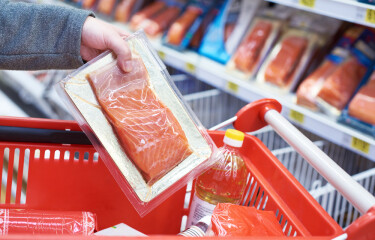After a lucrative holiday season to end 2023 for U.S. retailers, some analysts are forecasting a tougher year ahead for the industry, with seafood sales likely to suffer from decreased demand due to higher prices and increased costs throughout the supply chain.
U.S. retail sales excluding automotive products rose 3.1 percent from 1 November through 24 December, according to preliminary data from Mastercard SpendingPulse. Notably, restaurant sales surged 7.8 percent during the holiday season, and grocery sales rose 2.1 percent.
“This holiday season, the consumer showed up, spending in a deliberate manner,” Mastercard Economics Institute Chief Economist Michelle Meyer said. “The economic backdrop remains favorable with healthy job creation and easing inflation pressures, empowering consumers to seek the goods and experiences they value most.”
However, the robust sales may have been an anomaly, according to recent data.
U.S. seafood wholesale prices on average have declined from all-time highs that came in late 2021 and early 2022, but those prices have been on the upswing again over the past year, according to both Circana and Urner Barry data that analysts referenced in the Wells Fargo Agri-Food Institute Industry Update - Q4 2023.
As a result, throughout the second half of 2023 – with the holiday season as an exception – U.S. fresh and frozen seafood sales and volume declined significantly. For example, fresh seafood sales plunged 7.4 percent by value in August, while fresh seafood volume decreased 6.6 percent by value. Frozen seafood sales dropped 7.7 percent by value and 8.1 percent by volume.
“Essentially, we’re seeing a lower volume of seafood sales at the retail level combined with higher retail prices as retailers have less room to reduce prices due to the higher overall supply chain costs,” the report said. “Each step of the chain typically relies on some type of borrowing to finance purchases, cost of maintaining inventory, and collecting receivables. While this need for financing is not in itself unusual, when the cost of financing for each link in the overall supply chain effectively doubles in a year’s time, these increased costs force a price adjustment at each level of the supply chain.”
These factors have created a cycle in which demand declines as prices rise and buyers look for lower-cost products, resulting in lower sales and a build-up of inventory. That excess inventory then creates pressure for a price adjustment to clear out the growing inventory, Wells Fargo said.
“As a result, the wholesale value of various seafood products falls. This is what has essentially happened to shrimp, salmon, crab, and several other products, which has ultimately flowed down to the harvesters who are being offered lower prices for their catch,” the report said.
Such a scenario has come to fruition in the fresh salmon retail market, and the same pattern has occurred in the ...
Photo courtesy of Sergey Ryzhov/Shutterstock








